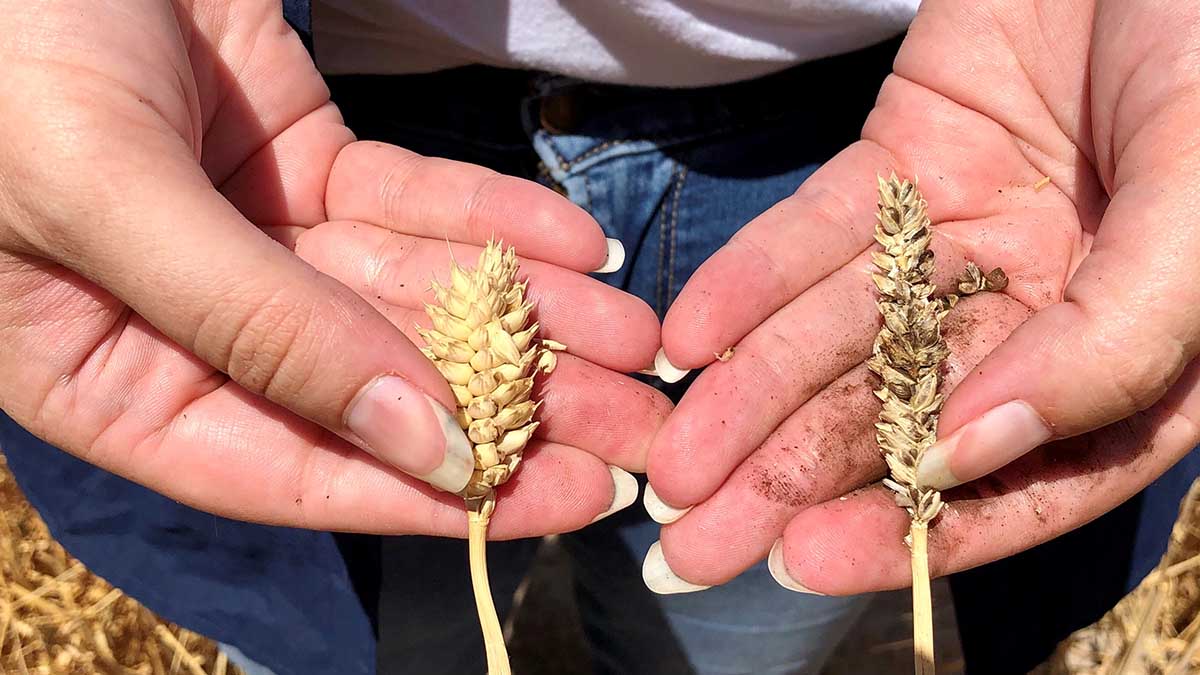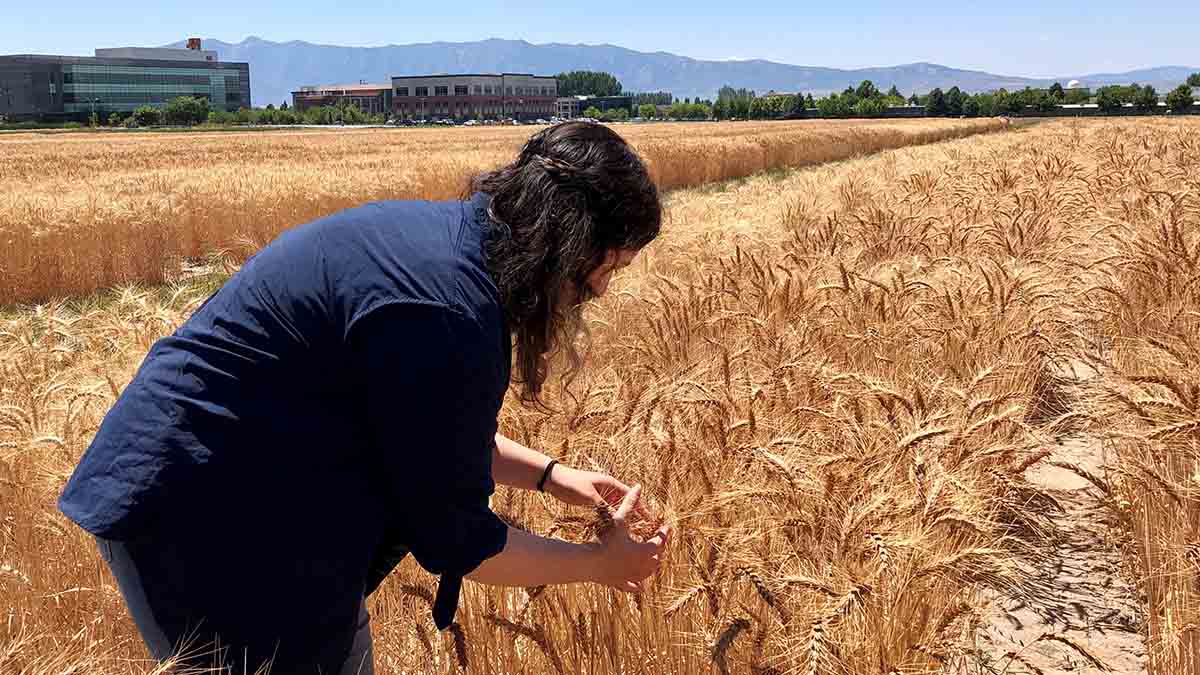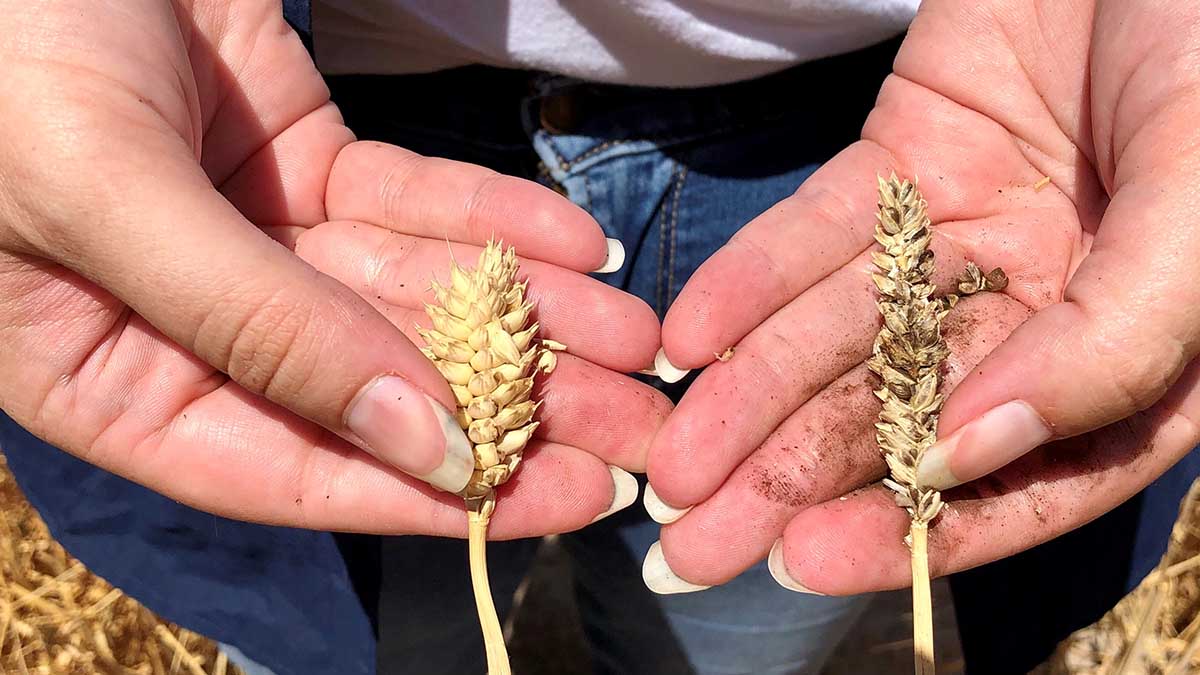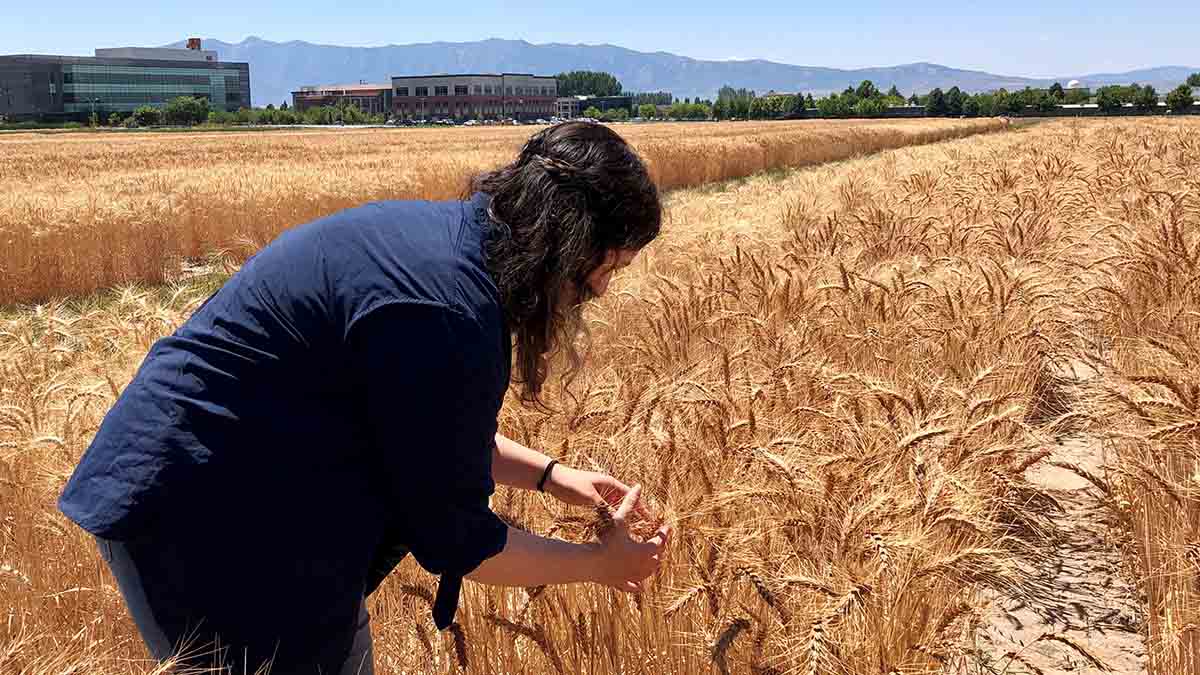Investigating Smut Resistance
CALS student develops innovative methods to investigate the infection process of smut in wheat
Rachel Patterson first fell in love with agriculture when she took a plant science class in high school.
“I was the only kid doing experiments in the greenhouse at lunch,” Patterson said. “And the whole time I was doing that, I thought, ‘Well, this is just for fun. I’m going to be an architect.’”
Now pursuing a master’s degree in plant pathology from the University of Idaho’s College of Agricultural and Life Sciences, Patterson is investigating a pathogen in wheat called smut, also known as common bunt or dwarf bunt, which is caused by two different types of fungi — Tilletia laevis and T. caries.
Smut Resistance
Historically, smut has been one of the worst pathogens impacting wheat. It infects the seed or the young plant beneath the soil and causes the wheat kernels on the adult plant to be replaced with smelly black spores that break open and contaminate the entire crop. Fortunately, scientists in the 1950s developed a seed treatment that prevents smut infections. Given the treatments success, breeding programs that aim to improve wheat resistance to the pathogen lost their urgency.
However, in specific geographical regions like the Pacific Northwest, the treatments are difficult to apply to the seeds due to snow cover. Therefore, it is important for wheat to develop resistance to the pathogen so that treatment is not needed. The rise of organic agriculture also caused a need to continue studying wheat resistance to the pathogen because organic practices do not allow for most seed treatments.
Patterson is investigating wheat resistance to smut by studying a resistance gene called Bt8. She developed novel approaches to study Bt8, including fluorescence microscopy — a technique that utilizes fluorescent materials to track microorganisms under a light microscope to better understand how plants that contain the Bt8 gene react to the fungus.
Patterson also modified an existing method for detecting smut called qPCR (quantitative polymerase chain reaction) — a technique used to duplicate fragments of DNA. Specifically, she can use qPCR to confirm whether she is truly observing smut in the plant or if it may be a different type of fungus. If smut is present, Patterson can characterize how plants with the Bt8 gene defend against the fungus compared to plants without the Bt8 gene.
“My favorite part has been the little successes that add up to the validation of my ideas,” Patterson said. “I think when I first got the qPCR to work, I did cry a little bit. It’s just so exciting because I want to understand this, and I want to contribute.”
Complementing Existing Research
Patterson conducts her research at U of I’s Aberdeen Research and Extension Center under the supervision of Juliet Marshall, a plant pathologist and UI Extension specialist. Marshall received funding from the Idaho Wheat Commission and CALS to study and produce genetic mapping populations of wheat. These are generated by breeding two or more genetically diverse plants and using their progeny to create generations of plants that isolate a gene of interest. The genetic data from this process improves plant breeders’ ability to locate specific genes.
When Patterson joined the project, she conducted a comprehensive review of literature to design a study that would complement Marshall’s work.
“Rachel is very conscientious and very thorough,” Marshall said. “She has done an excellent job in exploring the literature to set up her understanding and design these experiments.”
Marshall also suggested Patterson inspect the root material of the wheat plant, which previously had not been done. In doing so, Patterson found fragments of the fungus, which indicates that it is interacting differently with the wheat plants than previously expected.
“This finding opens up a whole new perspective in understanding not only the fungal biology, but also the host biology,” Marshall said. “If she’s able to pinpoint the infection process, that really lays the groundwork for identifying the primers that are necessary to determine resistance and susceptibility at a very early age. Results from her project will give us a lot more clarity on the infection process associated with the dwarf bunt fungi.”
Patterson lives in Idaho Falls and travels to Aberdeen two to four times a week to collect data. She is completing her degree online and through U of I Idaho Falls.
Originally from Gaithersburg, Maryland, Patterson graduated from the University of Maryland with her bachelor’s degree in plant science. After graduating, she worked at the Mycology and Nematology Genetic Diversity and Biology Laboratory in Beltsville, Maryland, for 18 months as a curatorial and laboratory assistant. She spoke with her supervisor there about her desire to pursue a career in plant pathology. Patterson’s supervisor, who attended graduate school with Marshall at the University of Illinois, suggested Patterson attend U of I to work with Marshall.
“Within two weeks I was in Idaho interviewing, a week later I’d committed to coming, and two months after that I was packing my car and driving all the way,” Patterson said.
Patterson is still navigating what her next step will be after she graduates in May 2021, but she is excited to explore her opportunities.
Article by Jean Parrella, College of Agricultural and Life Sciences
Photos provided by Rachel Patterson
Published in August 2020












